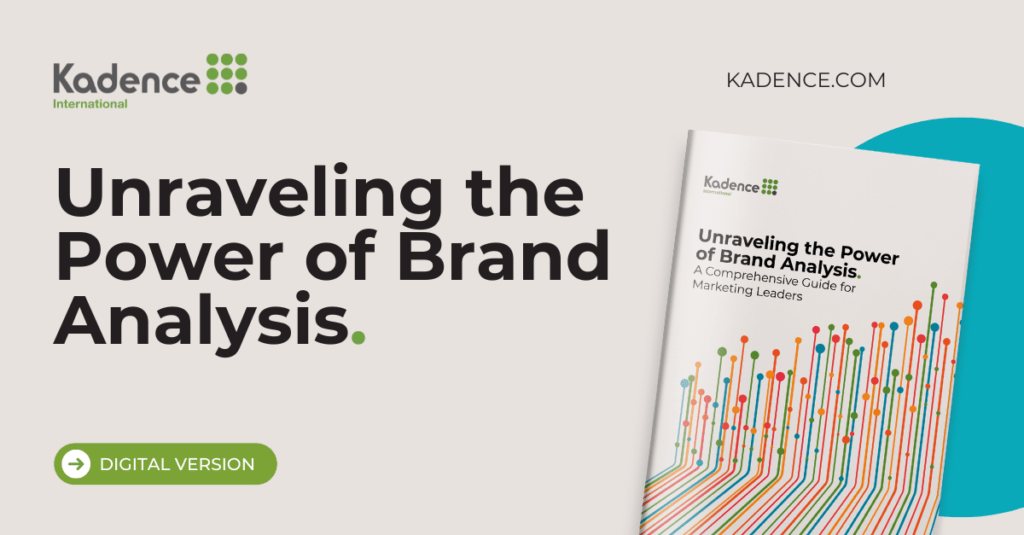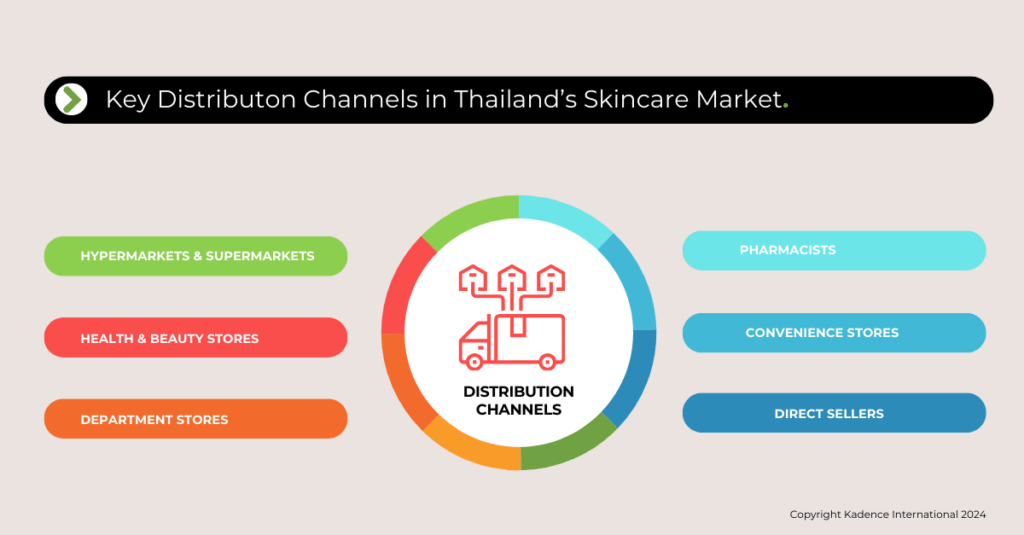Staying relevant requires more than a strong product or service—it demands a deep understanding of your customer base. Brands that put users at the center of their decision-making process are better positioned to build long-term loyalty. A user-centric approach isn’t just about addressing customer needs but anticipating them. This is where continuous user studies come into play.
Major market disruptions—whether apparent, like COVID-19, or more nuanced shifts in behavior—can leave brands scrambling to understand what’s changed. The challenge is that not all disruptions announce themselves. Economic shifts, technological advancements, and subtle cultural trends can profoundly impact customer preferences.
By regularly gathering and analyzing user feedback, brands can stay in tune with evolving consumer preferences and behaviors. This ongoing process provides valuable insights that allow companies to make informed decisions and adapt quickly to market shifts. For brands, continuous user studies represent a strategic advantage that helps ensure customer satisfaction, builds trust, and ultimately strengthens brand loyalty.
Why Continuous User Studies are Crucial for Brand Loyalty
Continuous user studies fundamentally differ from one-off research projects. They provide an ongoing stream of real-time insights into customer behavior rather than a snapshot at a single point in time. While a one-time study might give you a quick look at what consumers are thinking or feeling at that moment, continuous research allows brands to track evolving preferences and identify patterns as they emerge.
The benefits of this approach are clear. With real-time feedback loops, brands can spot trends early, address potential pain points before they become bigger issues, and fine-tune their customer experience in ways that truly matter. This constant flow of information empowers brands to stay agile and responsive, ensuring their strategies align with customer expectations.
In terms of loyalty, the impact is significant. Understanding customer preferences on an ongoing basis enables brands to build stronger, more personalized relationships. When consumers feel heard and see their feedback reflected in their products or services, they are likelier to stick with the brand. Over time, this leads to increased retention and a more loyal customer base.
The Role of Feedback Loops in Building Loyalty
Feedback loops are essential to maintaining strong customer relationships. At their core, feedback loops are ongoing communication channels between a brand and its consumers, where information flows in both directions. Brands collect user input, make adjustments based on that feedback, and then observe how those changes impact customer satisfaction. This cycle continues, allowing brands to stay connected to what their customers need and expect.
Brands can gather this feedback in several ways. Surveys, for example, offer a direct method of capturing customer opinions on specific products or experiences. Focus groups provide deeper insights by allowing brands to explore user thoughts in real-time. User-generated content, such as product reviews or social media posts, offers another avenue for understanding how consumers interact with and perceive a brand.
For marketers and product managers, the challenge is to integrate these feedback mechanisms into a sustainable, continuous process. It’s not enough to conduct one survey or run an occasional focus group. To truly maintain high levels of brand satisfaction, these tools must be used consistently, providing a steady flow of data that can be analyzed and acted upon. By establishing robust feedback loops, brands can remain responsive to their audience, adjust strategies as needed, and keep consumers engaged and loyal.
Real-World Examples of Brands Leveraging Continuous User Studies
Several emerging brands are successfully using continuous user studies to refine their customer experience and improve brand loyalty.
Image credit: Ad Age
Monzo (UK), a digital bank, has built its reputation on customer-centricity. Monzo uses continuous user studies by actively involving its customers in product development and feedback loops. The brand regularly seeks input through its community forum and app-based surveys to assess customer needs and gather insights. One notable example occurred when users expressed concerns over financial transparency within the app. In response, Monzo introduced new budgeting tools, making it easier for users to track spending in real-time. This user-driven innovation has directly contributed to the bank’s growing customer base and high satisfaction levels, with Monzo consistently receiving positive reviews for its customer service and transparency.
Image credit: Lenskart
Lenskart (India), an eyewear retail brand, leverages continuous feedback to ensure a better customer experience across its digital and physical channels. Lenskart regularly collects data on user preferences through website interactions, product reviews, and customer service touchpoints. When users highlighted difficulties in choosing the right frame online, Lenskart introduced a virtual try-on feature, which was a direct response to this feedback. This new tool helped increase online conversion rates, with the brand seeing a significant uptick in sales after implementation. The ability to respond quickly to customer insights has positioned Lenskart as a leader in the rapidly growing Indian eyewear market.
Image credit: Oatly
Oatly (US & Europe), an alternative dairy brand, has successfully used continuous user studies to refine its marketing and product development strategies. Oatly actively engages customers via social media platforms and direct feedback through online surveys. One example was when Oatly received feedback about the demand for new flavors and formulations. The company responded by developing a range of flavored oat milk options that catered to consumer preferences for lower sugar content. By keeping its finger on the pulse of consumer expectations, Oatly has maintained strong brand loyalty among its health-conscious, eco-minded audience, leading to its steady growth in the plant-based beverage industry.
Image credit: Gogoro
Gogoro (Taiwan), a company specializing in electric scooters and battery-swapping infrastructure, relies on continuous user studies to refine its product offerings. Through its app and in-person events with scooter owners, Gogoro gathers user feedback, continuously learning how riders use their vehicles and what features they want. Based on user input, Gogoro introduced extended battery range options and improved safety features. These customer-centric enhancements helped the company strengthen its position in Taiwan’s competitive electric vehicle market, resulting in increased rider satisfaction and brand loyalty.
Image credit: Miro
Miro (US & Global), a digital collaboration platform, has embraced continuous user studies to stay responsive to the needs of its diverse customer base. Miro uses in-app surveys and user feedback sessions to understand how teams use their platform for remote collaboration. When users requested more customization options and better integration with other tools, Miro added new features, such as enhanced template libraries and smoother integrations with popular software like Slack and Zoom. This responsiveness to customer feedback has contributed to Miro’s rapid growth and high retention rates, particularly among businesses adopting remote or hybrid work models.
How Brands Can Implement Continuous User Studies
Integrating continuous user studies into your marketing strategy is a practical and essential way to stay aligned with evolving customer needs. Here’s a step-by-step guide to developing a sustainable feedback system that delivers ongoing insights and drives long-term brand loyalty.
Step 1: Define Objectives and Set Key Metrics
Start by identifying the specific objectives of your user studies. What do you want to learn from your customers? Are you looking to improve product features, enhance the customer experience, or identify new market opportunities? Setting clear objectives will help you determine the type of feedback you need and how frequently it should be collected. Key metrics, such as Net Promoter Score (NPS), customer satisfaction (CSAT), or customer effort score (CES), should be chosen based on these objectives to track and measure success over time.
Step 2: Select the Right Feedback Channels
Next, choose the appropriate tools and platforms to gather user feedback. A combination of methodologies ensures a steady stream of insights from different perspectives.
- Surveys: Regular customer surveys can be deployed via email, in-app pop-ups, or website widgets to capture direct feedback.
- A/B Testing: This method allows you to test variations of your product, website, or marketing campaigns to see which resonates better with your audience. A/B testing platforms like Google Optimize can help analyze user behavior and preferences in real-time.
- User Interviews and Focus Groups: Conducting in-depth interviews or hosting focus groups helps gather qualitative insights, providing a deeper understanding of customer motivations and pain points.
- NPS and CSAT Surveys: These widely used metrics help you measure customer loyalty and satisfaction.
- Social Listening Tools: These tools can capture user-generated content and feedback on social media, providing insight into how customers perceive your brand publicly.
Step 3: Create a Feedback Loop
Once you’ve collected the data, it’s crucial to establish a feedback loop where the insights are turned into actionable strategies. This involves:
- Analyzing the Data: Regularly review the feedback collected and identify common trends, emerging needs, and recurring issues. Use analytics tools to break down the data, ensuring it’s actionable.
- Taking Action: Implement changes based on what the data reveals. Whether it’s optimizing a product feature or tweaking your marketing messages, ensure that feedback drives decision-making.
- Closing the Loop: Inform your customers that you’ve heard their feedback and made changes. This not only builds trust but also encourages further engagement.
Step 4: Segment Your Audience for Diverse Insights
Continuous user studies should not take a one-size-fits-all approach. Segmenting your audience is essential to ensure you capture feedback from diverse customer groups. Segmenting allows you to understand the specific needs of different user demographics, such as age, location, or purchasing behavior.
- Create Customer Personas: Build detailed personas that reflect the key segments of your audience. This will help tailor feedback requests and ensure relevance for each group.
- Tailor Feedback Mechanisms: Use different tools and methodologies for different segments. For example, younger audiences may prefer in-app feedback, while more traditional customers might engage better with email surveys or phone interviews.
Step 5: Maintain Consistency
Finally, the key to a successful continuous user study is consistency. Feedback should be gathered regularly, not just during a product launch or when problems arise. Set a schedule for when surveys will be sent, how often A/B tests will run, and when to conduct focus groups. Consistency ensures that your brand is always in tune with customer expectations, allowing you to stay ahead of shifting trends and market changes.
Challenges and Solutions in Continuous User Research
While continuous user research offers substantial benefits, it also comes with its own set of challenges. For senior marketers, understanding and addressing these challenges is vital to maintaining an effective and sustainable feedback system. Here are some common obstacles and practical solutions to overcome them.
Challenge 1: Survey Fatigue
One of the most common issues with continuous user research is survey fatigue. Customers may become tired of receiving frequent requests for feedback, leading to lower response rates and disengagement.
Solution: To combat survey fatigue, focus on timing and relevance. Rather than sending generic surveys to all customers, segment your audience and tailor the feedback requests based on user behavior. For example, surveys can be sent after specific actions, such as after a purchase or product use, rather than at random intervals. You can also rotate your feedback channels, balancing surveys with other methods like social media engagement or in-app feedback, ensuring that customers don’t feel overwhelmed.
Challenge 2: Data Overload
With continuous feedback comes the challenge of managing and making sense of large volumes of data. Without a structured system, it’s easy to become overwhelmed by the sheer amount of information, leading to missed insights or inaction.
Solution: Automating the data collection and analysis process can help manage large datasets. Tools can aggregate and analyze feedback, identifying key trends and actionable insights without manual intervention. Setting up dashboards that filter feedback based on relevant KPIs will allow brand leaders to quickly determine the most critical insights. Additionally, prioritize feedback by categorizing it into short-term fixes and long-term strategic improvements to keep the focus clear and actionable.
Challenge 3: Integrating Feedback with Other Marketing Activities
Incorporating continuous user feedback into existing marketing and product development cycles can be a logistical challenge. Without a cohesive system, feedback risks becoming siloed, and actionable insights may not reach the teams that need them.
Solution:
- Integrate feedback directly into your broader marketing and development workflows by aligning it with key decision-making points.
- Establish clear processes for sharing insights across departments, ensuring that marketing, product development, and customer service teams are all looped in.
- Use project management tools to track feedback implementation, ensuring that responses to user insights are reflected in product updates, marketing strategies, or customer service improvements.
Challenge 4: Inconsistent or Biased Feedback
Depending on how and when you gather feedback, responses may not always represent your entire customer base. Feedback can often be biased toward more vocal customers, which may not reflect the majority experience.
Solution: Address this by ensuring diverse feedback sources and consistent segmentation. Use different methods—such as surveys, focus groups, and social listening tools—to gather a wide range of responses from various customer segments. You can collect more representative insights by segmenting your audience based on demographics, behavior, and preferences. Additionally, be mindful of the phrasing and structure of surveys and interviews to avoid leading questions that could bias responses.
Challenge 5: Actionability of Feedback
Another challenge is ensuring that feedback translates into actionable steps. Too often, feedback gets collected but not implemented meaningfully, leading to frustration within the company and among customers.
Solution: Create a clear process for turning feedback into action. Start by identifying quick wins—changes that can be made immediately based on customer feedback. For more complex issues, establish a workflow that outlines the steps for deeper analysis, testing, and eventual implementation. Regularly communicate with teams about which feedback has been acted on and how it has informed the overall strategy. Moreover, close the loop with your customers by showing them how their feedback has led to improvements, reinforcing their role in shaping the brand.
The Long-Term Benefits of Continuous User Studies
The long-term benefits of continuous user studies extend far beyond short-term improvements. By consistently refining the customer experience, brands can retain existing customers and attract new ones. The insights gained through ongoing feedback allow companies to stay responsive to shifting consumer needs, which translates into stronger brand loyalty and increased customer satisfaction.
One of the main advantages of continuous user studies is their ability to create a cycle of improvement that directly impacts customer retention. Customers feel valued and heard when brands regularly adjust their offerings based on real-time feedback. This leads to higher satisfaction levels, making customers more likely to stay with the brand. Studies have consistently shown that satisfied customers are more loyal and tend to spend more over time, contributing to revenue growth.
Research suggests that increasing customer retention by just 5% can boost profits by 25% to 95%, illustrating the tangible connection between satisfaction, loyalty, and financial success.
The Loyalty Effect: The Hidden Force Behind Growth, Profits, and Lasting Value. Harvard Business Review Press, 2001.
Additionally, continuous user studies play a critical role in attracting new customers. By fine-tuning the customer experience and addressing potential issues before they escalate, brands create a more appealing offering for new prospects. Word-of-mouth recommendations, positive online reviews, and social media buzz—often driven by satisfied customers—help draw new audiences to the brand. In this way, continuous user studies are a powerful tool for retaining and expanding a customer base.
Continuous user studies help brands remain agile, allowing them to adapt to new trends and shifts in consumer behavior. This adaptability keeps existing customers engaged and ensures that the brand remains competitive in the face of evolving market dynamics. By regularly gathering and acting on user feedback, brands can future-proof their offerings, positioning themselves to thrive in changing environments.
Ultimately, continuous user studies are more than just a feedback mechanism—they are a strategic advantage. Brands that commit to ongoing user research can build deeper connections with their customers, maintain long-term loyalty, and drive sustainable growth.
Final Thoughts
Consumer expectations constantly evolve, and brands that fail to actively listen to their customers risk becoming irrelevant. Continuous user studies aren’t just a nice-to-have—they’re a necessity. Brands that prioritize this approach will have the edge, consistently staying ahead of trends and shaping their strategies based on real insights, not assumptions. It’s no longer enough to react to customer needs; the brands that thrive are the ones that anticipate them.
If you’re serious about building lasting connections with your audience, now is the time to make continuous user studies a central pillar of your loyalty strategy. The data is already out there—what matters is how you harness it. Integrating a robust feedback system into your broader marketing plan will not only keep you connected to your customers but will also drive the kind of continuous improvement that separates leading brands from the rest. The choice is clear: commit to listening, adapt, and watch your brand loyalty grow.





















 Senior Marketing Executive
Senior Marketing Executive Sales & Marketing
Sales & Marketing General Manager PR -Internal Communications & Government Affairs
General Manager PR -Internal Communications & Government Affairs Vital Strategies
Vital Strategies
 Customer Intelligence Director
Customer Intelligence Director